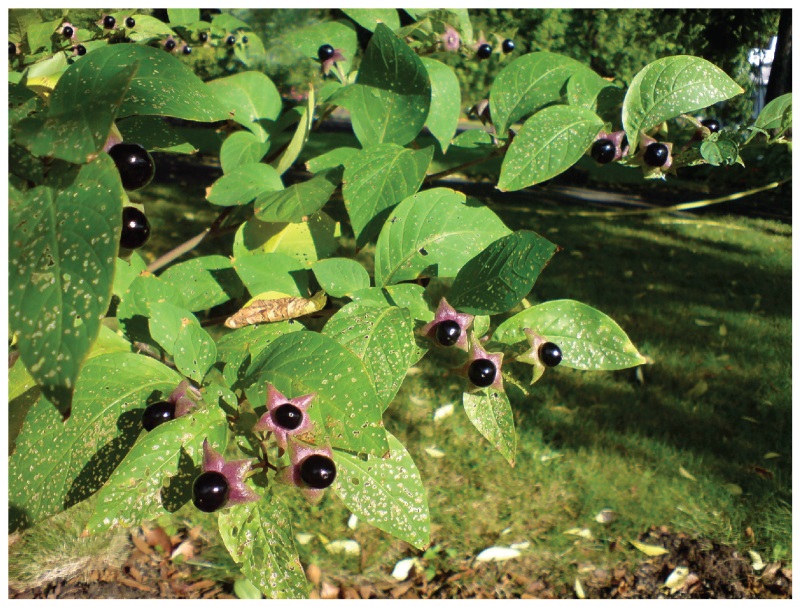Parasympathetic Effects
Drugs affecting parasympathetic functions can be classified into those that increase or decrease activity at postganglionic terminals. Parasympathetic postganglionic fibers release ACh, and the receptors on the targets are muscarinic receptors.
Atropine and scopolamine are part of a class of muscarinic antagonists that come from the Atropa genus of plants that include belladonna or deadly nightshade. Suppression of parasympathetic function, especially when it becomes systemic, can be fatal. Autonomic regulation is disrupted by such an anticholinergic drug, and anticholinergic symptoms develop. The berries of this plant are highly toxic, but can be mistaken for other berries.
Belladonna Plant

Figure 11: The plant from the genus Atropa, which is known as belladonna or deadly nightshade, was used cosmetically to dilate pupils, but can be fatal when ingested. The berries on the plant may seem attractive as a fruit, but they contain the same anticholinergic compounds as the rest of the plant.
| Drug Type | Example | Sympathetic effect | Parasympathetic Effect | Overall Result |
|---|---|---|---|---|
| Nicotinic agonists | Nicotine | Mimic ACh at preganglionic synapses, causing activation of postganglionic fibers and the release of norepinephrine onto the target organ | Mimic ACh at preganglionic synapses, causing activation of postganglionic fibers and the release of ACh onto the target organ | Most conflicting signals cancel each other out, but cardiovascular system is susceptible to hypertension and arrhythmias |
| Sympathomimetic drugs | Phenylephrine | Bind to adrenergic receptors or mimics sympathetic action in some other way | No effect | Increase sympathetic tone |
|
Sympatholytic drugs |
β-blockers such as propanolol or metoprolol; α-agonists such as clonidine |
Block binding to adrenergic drug or decrease adrenergic signals |
No effect |
Increase parasympathetic tone |
| Anticholinergics/muscarinic antagonists | Atropine, scopolamine | No effect | Block muscarinic receptors and parasympathetic function | Increase sympathetic tone |

